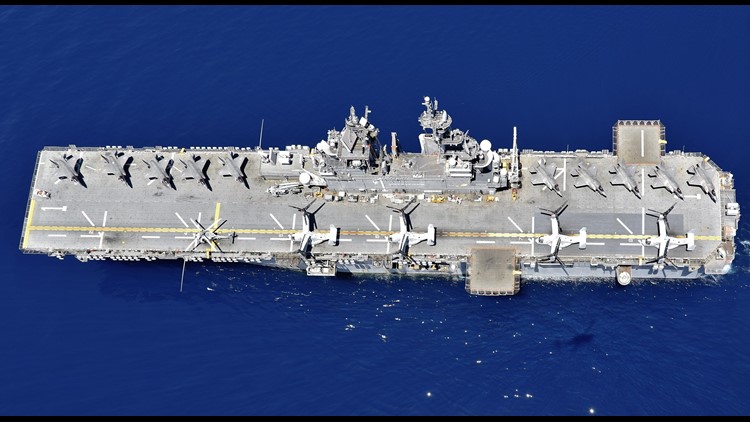The world saw a military spending boom in 2018, driven largely by the United States and China, which now account for almost half of the world’s military expenditure, the Stockholm International Peace Research Institute (SIPRI) said in a new report.
Global spending on defense hit $1.82 trillion in 2018, up 2.6% on the previous year and the highest figure since 1988, the first year that reliable global data was available, according to the Swedish think tank.
The United States — which retains its title as the world’s biggest military spender — raised its spending for the first time in seven years to $649 billion in 2018. The US spent almost as much on defense in 2018 as the next eight countries on the list combined, the report said.
“They are in the midst of implementing a military modernization program over the next 20 to 25 years, which some analysts say will cost the US $1.8 trillion,” Nan Tian, a researcher for the SIPRI Arms and Military Expenditure Program, told CNN.
He said the modernization program, which was agreed upon in the final year of the Obama administration, “will continue [military spending] increases in the US in the coming years,” Tian added.
China, the world’s second largest spender, increased its spending by 5% to $250 billion in 2018 — the 24th consecutive year of rising Chinese military expenditure, SIPRI wrote. China accounted for 14% of global defense expenditures last year, the report said.
Saudi Arabia ($67.6 billion), India ($66.5 billion), France ($63.8 billion), Russia ($61.4 billion) and the UK ($50 billion) were among the world’s biggest military spenders, according to SIPRI data.
Geopolitical tensions
Tensions between Asian countries, as well US and China’s contest for primacy, were “major drivers” for the growth in military spending in Asia and Oceania, SIPRI added.
“At $507 billion, military spending in the region accounted for 28% of the global total in 2018,” SIPRI wrote.
In 2018, India increased spending by 3.1% to $66.5 billion and its longtime rival Pakistan increased spending by 11% to $11.4 billion.
And in spite of Russian military spending falling in the last couple years, “growing perceptions of a threat” from Russia has precipitated large increases in military spending in several Central and Eastern European countries.
“Spending by Poland rose by 8.9% in 2018 to $11.6 billion, while Ukraine’s spending was up by 21% to $4.8 billion. Spending by Bulgaria, Latvia, Lithuania and Romania also grew (ranging from 18% to 24%) in 2018,” the report said.
As for Western Europe, “there has been talks of increasing spending in line with NATO but we have not seen it in evidence,” Tian said of pressure by the Trump administration on a number of NATO allies to increase defense spending to the recommended target of 2% of GDP.
“If there is any country that is pushing [to get to a] 2% share of GDP, it is Germany,” Tian said. Germany spent 1.2% of its GDP on defense in 2018 and previously pledged to increase spending to 1.5% of GDP by 2024.
Military spending increased by 3.1% in South America, but fell by 8.4% in Africa and by 1.9% in Middle Eastern countries for which data was available, the report said.
“The decrease in the Middle East has to do with Saudi Arabia,” Tian said, which saw cuts due to “debt and overspending.”



